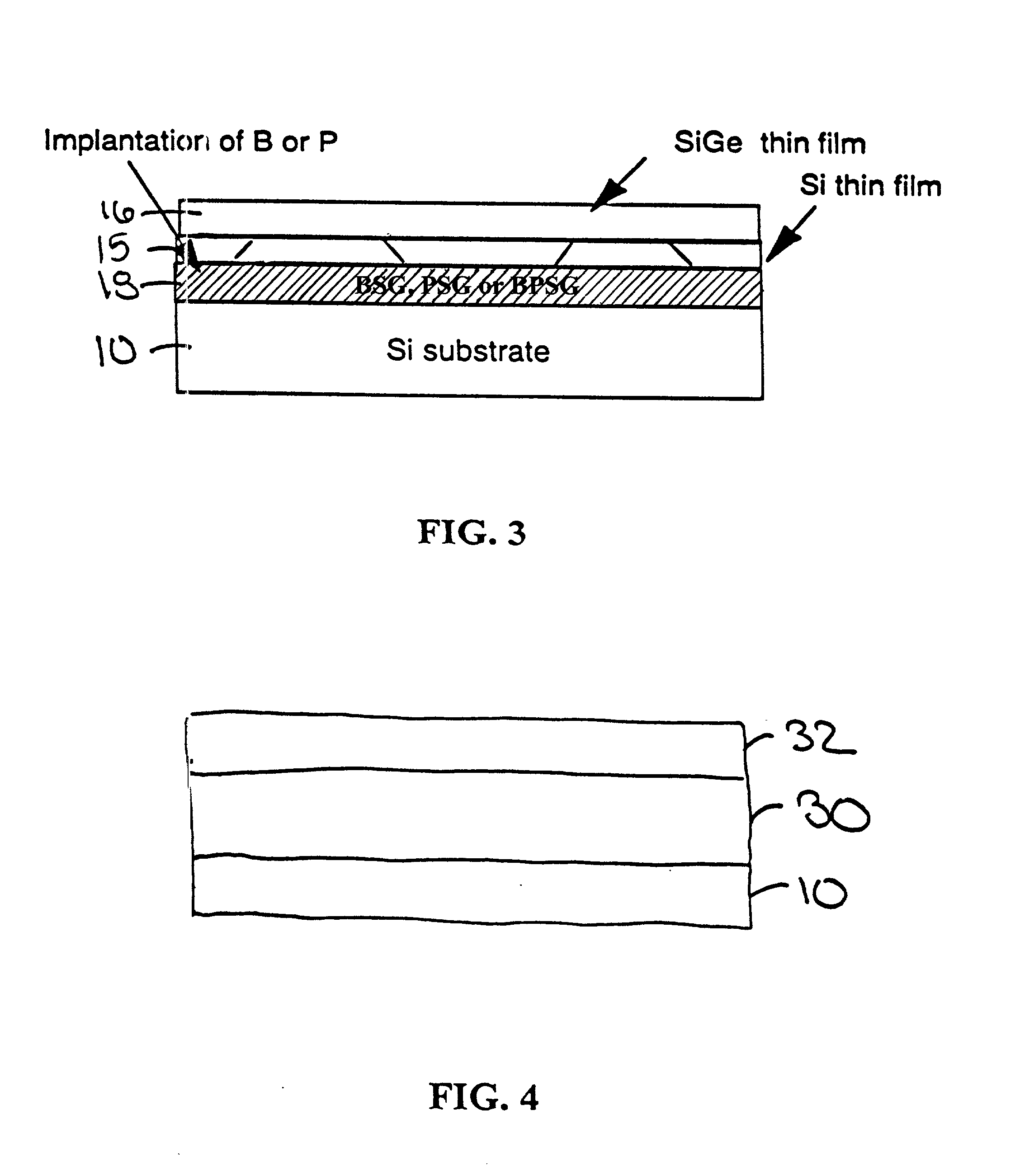Processing method for forming dislocation-free silicon-on-insulator substrate prepared by implantation of oxygen
- Summary
- Abstract
- Description
- Claims
- Application Information
AI Technical Summary
Problems solved by technology
Method used
Image
Examples
Embodiment Construction
[0024] The present invention provides a unique structure by providing a doped glass layer buried underneath a silicon layer formed by ion implantation over a silicon substrate. This reduces the dislocation density of the top silicon layer and thus provides a better SOI substrate as compared with the prior art such as that shown in FIG. 1.
[0025] To assist the slippage of silicon atoms atop of the buried oxide layer, the re-floating (viscous) temperature of the buried oxide may be reduced. It is well known to one skilled in the art that boron silicate glass (BSG), phosphorous silicate glass (PSG) and boron phosphorous silicate glass (BPSG) have a much lower refloating temperature as compared with silicon dioxide. Depending on the boron or phosphorous concentration, the viscous temperature can go down to 900.degree. C. or even 700.degree. C. At such a low viscous temperature, buried BSG, PSG or BPSG will easily refloat such that the silicon relaxes to become a crystalline structure aft...
PUM
| Property | Measurement | Unit |
|---|---|---|
| Structure | aaaaa | aaaaa |
| Semiconductor properties | aaaaa | aaaaa |
| Dislocation density | aaaaa | aaaaa |
Abstract
Description
Claims
Application Information
 Login to View More
Login to View More - R&D
- Intellectual Property
- Life Sciences
- Materials
- Tech Scout
- Unparalleled Data Quality
- Higher Quality Content
- 60% Fewer Hallucinations
Browse by: Latest US Patents, China's latest patents, Technical Efficacy Thesaurus, Application Domain, Technology Topic, Popular Technical Reports.
© 2025 PatSnap. All rights reserved.Legal|Privacy policy|Modern Slavery Act Transparency Statement|Sitemap|About US| Contact US: help@patsnap.com



